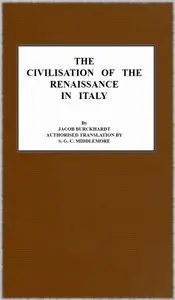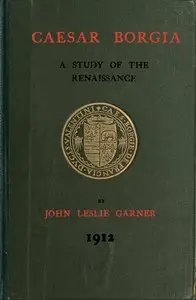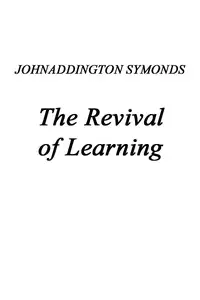The Civilisation of the Renaissance in Italy by Jacob Burckhardt is a historical analysis of Italy's Renaissance period during the late 1800s. It shines a light on the cultural, political, and social shifts, highlighting the rise of new political systems and leaders that defined a key era in the history of Europe. The book starts by unpacking the complicated political landscape of 13th-century Italy, focusing on its fragmented power structure. It contrasts effective rulers like Frederick II with the ensuing, often tyrannical, reigns. The push and pull of power between republics and dictators serves as an introduction the individual stories that show the political evolution of Italy that helped to create the foundation of modern civilization.

The Civilisation of the Renaissance in Italy
By Jacob Burckhardt
Explore an era defining shift in culture and power as republics and dictators emerge in a turbulent political landscape.
Genres
Released
2000-02-01
Formats
epub
epub3 (images)
mobi
mobi (images)
epub (images)
txt
Free Download
Summary
About the AuthorCarl Jacob Christoph Burckhardt was a Swiss historian of art and culture and an influential figure in the historiography of both fields. His best known work is The Civilization of the Renaissance in Italy (1860). He is known as one of the major progenitors of cultural history. Sigfried Giedion described Burckhardt's achievement in the following terms: "The great discoverer of the age of the Renaissance, he first showed how a period should be treated in its entirety, with regard not only for its painting, sculpture and architecture, but for the social institutions of its daily life as well."
Carl Jacob Christoph Burckhardt was a Swiss historian of art and culture and an influential figure in the historiography of both fields. His best known work is The Civilization of the Renaissance in Italy (1860). He is known as one of the major progenitors of cultural history. Sigfried Giedion described Burckhardt's achievement in the following terms: "The great discoverer of the age of the Renaissance, he first showed how a period should be treated in its entirety, with regard not only for its painting, sculpture and architecture, but for the social institutions of its daily life as well."
Total Reviews
10.0k
Total reviews from Goodreads may change














